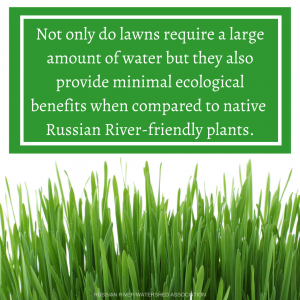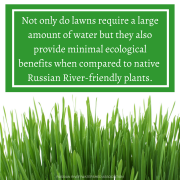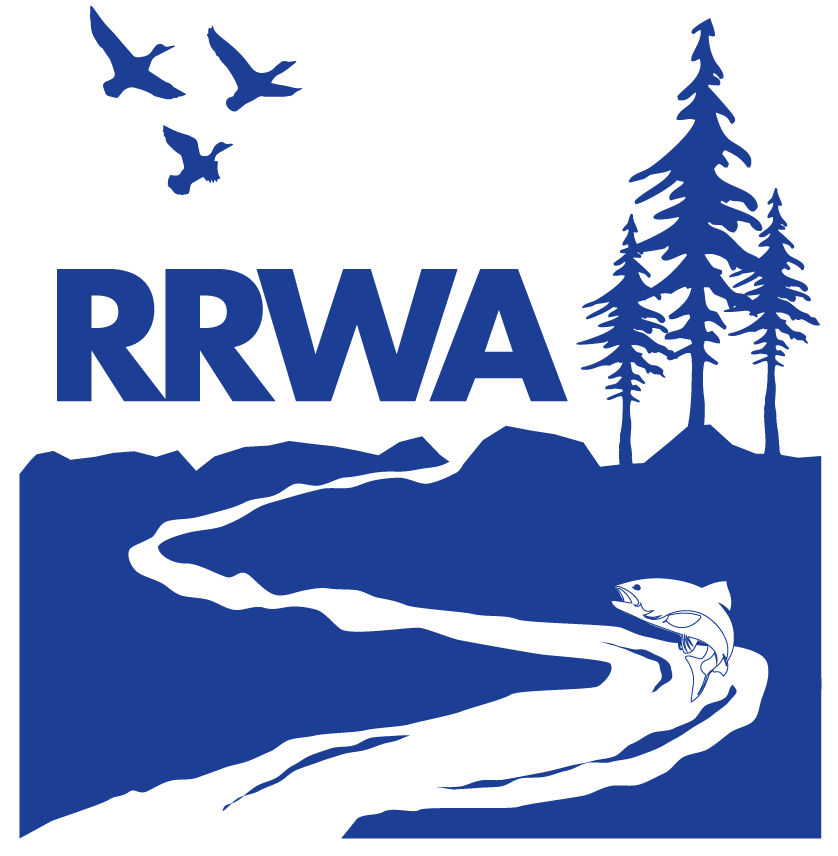Make a Move to Native and Drought Tolerant Plantings
This year is different. Historically low rainfall following a previously dry water year have tipped the balance of stored water within Lake Mendocino and water demand throughout the Russian River watershed. As water users in the upper Russian River continue to cut water usage, you may be wondering how we got here and how do we get out of this.
During the early summer of 2020, Sonoma Water, who manages the water storage in Lake Mendocino and Lake Sonoma, filed a temporary urgency change petition (TUCP) with the State Water Resource Control Board. A TUCP allows water right holders to temporarily change restrictions of their water rights. Once the State Water Board approved Sonoma Water’s TUCP, releases from Lake Mendocino were reduced to save stored water. This early action helped prepare the region for the lack of rain during the 2020/21 winter season.
The result of Sonoma Water’s efforts was to finish 2020 with roughly 29,000-acre feet of stored water. Water storage as of October 1, 2021 is near 15,000-acre feet, roughly half of what we finished 2020 with, and we are not even to the end of the year. Good rainfall this winter will not lessen the need for conservation next summer.
 For many municipalities and small community water systems along the Russian River, water use peaks during the summer months due to outdoor irrigation. When water rights up and down the Russian River were curtailed earlier this summer, indoor and outdoor water use needed to be reduced. Healdsburg was able to gain large reductions in water use by restricting outdoor water use and supplementing outdoor irrigation by hauling recycled water. Key to these efforts was focusing on irrigation of ornamental lawns, sometimes referred to as “non-function lawn areas.” Ornamental lawns use a tremendous amount of water, and their elimination is an immediate and effective option to reduce water use.
For many municipalities and small community water systems along the Russian River, water use peaks during the summer months due to outdoor irrigation. When water rights up and down the Russian River were curtailed earlier this summer, indoor and outdoor water use needed to be reduced. Healdsburg was able to gain large reductions in water use by restricting outdoor water use and supplementing outdoor irrigation by hauling recycled water. Key to these efforts was focusing on irrigation of ornamental lawns, sometimes referred to as “non-function lawn areas.” Ornamental lawns use a tremendous amount of water, and their elimination is an immediate and effective option to reduce water use.
As we look forward and hope for a wet winter, we need to understand that, within the Russian River watershed, the cyclical transition from dry years to wet years and back again, is becoming more pronounced with climate change. This will be part of our long-term future. To prepare for future dry years we need to change how we use our supply of drinking water, especially how we irrigate our landscapes. To build drought resiliency and gain some consistency in our outdoor environment we need to move away from ornamental lawns and non-native plantings. We need to replace these water intensive landscapes with plantings that can survive during periods of limited irrigation. There is a lot of effort and cost put into landscapes each year. If those landscapes can tolerate our cyclical pattern of dry and wet years, that investment will be better protected in future years.
There are many free and widely available resources to help make a move to native and drought tolerant plantings. The Sonoma Marin Water Saving Water Partnership (www.savingwaterpartnership.org ) and the Sonoma County Master Gardeners (http://sonomamg.ucanr.edu) both offer great resources to start planning a replacement of water intensive landscapes. If you’re concerned about the supply of water within the Russian River and you want to be less affected by reoccurring droughts and needed conservation, start the process to replace lawns and non-native landscapes.
This article was authored by Utilities Director, Terry Crowley, of the City of Healdsburg, on behalf of RRWA. RRWA is an association of local public agencies in the Russian River Watershed that have come together to coordinate regional programs for clean water, habitat restoration, and watershed enhancement.




